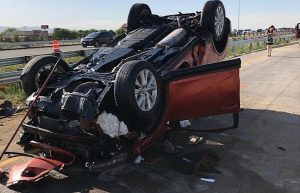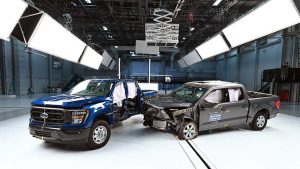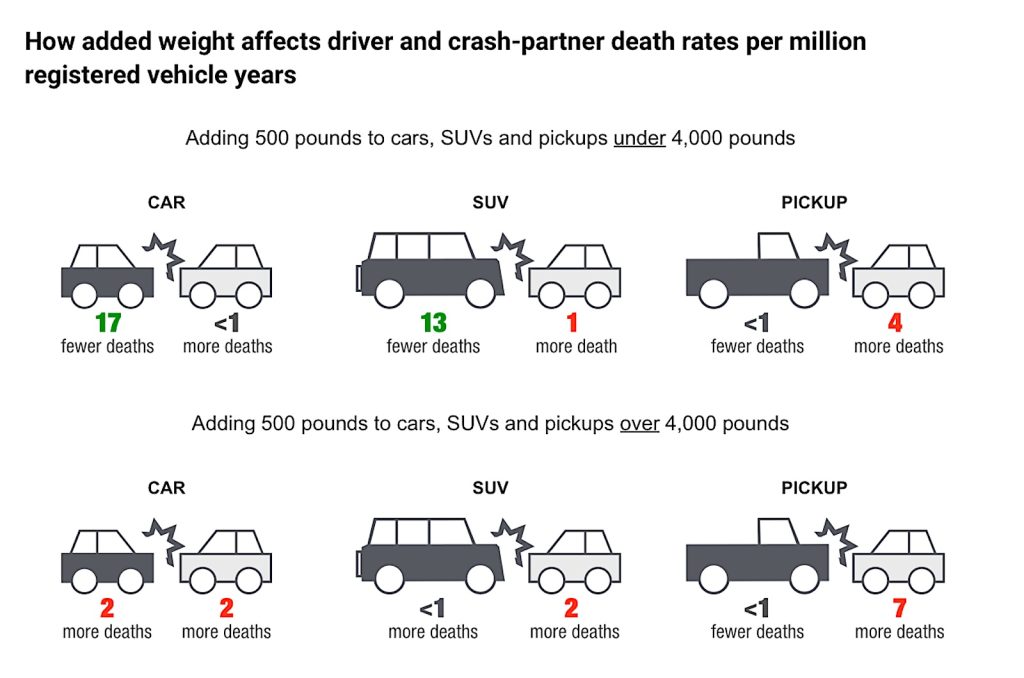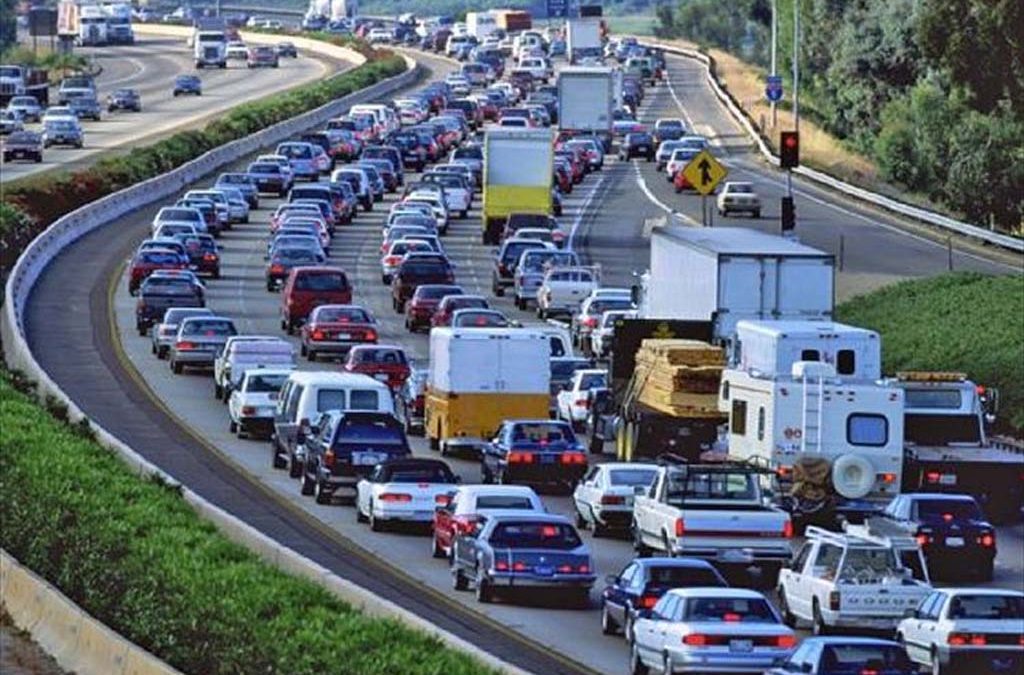Results from a new study from the Insurance Institute of Highway Safety temper the belief that many vehicle owners hold: Bigger is better. Not exactly, the group claims, after the new study shows that the occupants in the larger vehicle aren’t as safe from harm as they used to be.

The study shows that design changes in pickups and SUVs is offsetting the negative affects of the heavier weight of those vehicles in a crash.
The safety advances in new vehicles have made occupants of smaller vehicles safer while that isn’t the case in the larger, heavier vehicles so many American families favor these days.
“For American drivers, the conventional wisdom is that if bigger is safer, even bigger must be safer still,” said IIHS President David Harkey in a release. “These results show that isn’t true today. Not for people in other cars. And — this is important — not for the occupants of the large vehicles themselves.”
What’s changed
According to the study, when it comes to vehicles that weigh less than the fleet average, which is about 4,000 pounds, the risk that occupants will be killed in a crash decreases substantially for every 500 pounds of additional weight.
But those benefits top out quickly. For vehicles that weigh more than the fleet average, there’s hardly any decrease in risk for occupants associated with additional poundage.

Automakers have worked to make vehicles safer throughout the years, helping to reduce traffic deaths.
Conversely, adding 500 pounds to a lighter-than-average vehicle poses virtually no increased risk to people in other vehicles. But the same weight increase for a heavier-than-average vehicle increases the danger to people in other vehicles.
The reason for the change? Improved design. It used to be that larger vehicles essentially just rolled over the crumple zone — the hood — of cars, which is critical to passenger safety in a crash. However, during the past decade or so, automakers changed the front ends of those larger pickups and SUVs to make them better align with the front end of sedans during a crash, providing more protection to the occupants of the smaller car.
They also strengthened the structures of their cars and added side airbags to all varieties of vehicles to protect occupants in T-bone crashes. Largely as a result of those changes, both SUVs and pickups are substantially less dangerous to people in cars than they were earlier.
More Safety News
- Ford Looks to Address Quality Issues with New Leader
- Tesla is America’s Deadliest Automotive Brand, New Study Shows
- Ram Recall is 44th This Year for Stellantis
The numbers
IIHS is also quick to note that other technologies, such as improved airbags and other occupant protection devices have aided in the improved results. Here are some of the statistics:

Fatal pedestrian crashes have risen faster than overall highway fatalities. (Image courtesy: Stracci Law Group)
- Car occupants were 90% more likely to die in crashes with 2011-16 model year SUVs weighing more than 5,000 pounds as in crashes with other cars. That dropped to just 20% more with 2017 to 2022 model year utes.
- Pickups were 2½ times as likely as cars to result in car-partner fatalities in 2011-16 but a little less than twice as likely in 2017-22.
- For cars below the 4,000-pound average, every additional 500 pounds in curb weight reduced the driver death rate by 17 deaths per million registered vehicle years, while only increasing the death rate for crash-partner cars by one.
- In contrast, for pickups above the average weight, every additional 500 pounds only reduced the driver death rate by one but increased the death rate for crash-partner cars by seven.
“There’s nothing magical about 4,000 pounds except that it’s the average weight,” said Sam Monfort, a senior statistician at IIHS and lead author of the study.
“Vehicles that are heavier than average are more likely to crash into vehicles lighter than themselves, while the reverse is true for vehicles that are lighter than average. What this analysis shows is that choosing an extra-heavy vehicle doesn’t make you any safer, but it makes you a bigger danger to other people.”
Traffic deaths declining
 These efforts are working in concert with other factors to improve safety on U.S. roadways. According to the National Highway Traffic Safety Administration, traffic fatalities were down 4.4% through the first nine months of 2024, the most recent figures available.
These efforts are working in concert with other factors to improve safety on U.S. roadways. According to the National Highway Traffic Safety Administration, traffic fatalities were down 4.4% through the first nine months of 2024, the most recent figures available.
An estimated 29,135 people died in traffic crashes, representing a decrease of about 4.4% as compared to 30,490 fatalities projected for the first nine months of 2023.
Preliminary data from the Federal Highway Administration show that vehicle miles traveled in the first nine months of 2024 increased by 19.7 billion miles, about a 0.8% increase from the same time last year. More miles driven combined with fewer traffic deaths resulted in a fatality rate of 1.18 fatalities per 100 million VMT, down from the projected rate of 1.24 fatalities per 100 million VMT in the first nine months of 2023.
NHTSA is also estimating a decrease in fatalities in 35 states and Puerto Rico.
“While we’re encouraged by the continued decline in traffic fatalities, our work is far from done,” NHTSA Deputy Administrator Sophie Shulman said. “NHTSA remains deeply committed to reducing traffic fatalities by embracing the safe system approach and striving for the day when we will see zero deaths on our nation’s roads.”






Your headline lies!
B I G G E R I S B E T T E R (FOR THE GUY DRIVING BIGGER) !!!